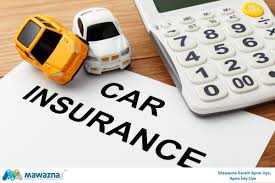A Guide to Commercial Auto Insurance
Commercial auto insurance is essential for businesses that use vehicles as part of their operations. This type of insurance covers a variety of vehicles, from cars and trucks to vans and buses, and protects businesses from financial losses due to accidents, theft, or other incidents involving their vehicles. Here’s a comprehensive guide on how to get commercial auto insurance.
What is Commercial Auto Insurance?
Commercial auto insurance is a policy designed to cover vehicles used for business purposes. It provides liability and physical damage coverage for vehicles owned, leased, rented, or hired by a business. This insurance is crucial for businesses that rely on vehicles for transportation, delivery, or other work-related activities.
Key Features of Commercial Auto Insurance
-
Liability Coverage:
- Covers bodily injury and property damage that your business is legally responsible for in the event of an accident.
-
Physical Damage Coverage:
- Collision Coverage: Pays for damage to your vehicle resulting from a collision with another vehicle or object.
- Comprehensive Coverage: Covers damage to your vehicle from non-collision incidents such as theft, vandalism, fire, or natural disasters.
-
Medical Payments Coverage:
- Covers medical expenses for injuries sustained by the driver and passengers in your business vehicle.
-
Uninsured/Underinsured Motorist Coverage:
- Protects your business if your vehicle is involved in an accident with a driver who has insufficient or no insurance.
-
Hired and Non-Owned Auto Coverage:
- Provides liability coverage for vehicles your business uses but does not own, such as rented or employee-owned vehicles used for business purposes.
-
Cargo Coverage:
- Covers the goods or materials being transported in your business vehicle.
Steps to Get Commercial Auto Insurance
-
Assess Your Needs:
- Determine the types of vehicles your business uses, how they are used, and the level of coverage required. Consider the number of vehicles, the nature of your business, and the value of the vehicles and cargo.
-
Gather Information:
- Collect detailed information about each vehicle, including make, model, year, VIN (Vehicle Identification Number), and current mileage. Also, gather information about the drivers, such as their driving history and license details.
-
Choose Coverage Options:
- Decide on the coverage types and limits that best suit your business needs. Consider factors like the value of your vehicles, the potential risks, and the legal requirements in your state or country.
-
Research Insurance Providers:
- Look for reputable insurance companies that offer commercial auto insurance. Check reviews, financial stability, and the range of coverage options they provide.
-
Request Quotes:
- Contact multiple insurance providers to request quotes for commercial auto insurance. Provide them with the necessary information about your vehicles and drivers to get accurate quotes.
-
Compare Quotes:
- Compare the quotes based on coverage options, limits, deductibles, and premium costs. Ensure that the policies meet your business needs and budget.
-
Check for Discounts:
- Inquire about available discounts, such as those for having a safe driving record, installing safety devices in your vehicles, or bundling multiple policies with the same provider.
-
Review Policy Terms:
- Carefully review the terms and conditions of the policies, including exclusions, limits, and any additional endorsements that may be required for specific coverage.
-
Purchase the Policy:
- Once you have selected the best policy for your needs, complete the application process and purchase the insurance. Make sure to provide accurate information to avoid issues with claims in the future.
-
Maintain and Update Coverage:
- Regularly review and update your coverage as your business grows or changes. Ensure that new vehicles or drivers are added to the policy promptly.
Benefits of Commercial Auto Insurance
- Financial Protection: Covers the costs of accidents, theft, and damage, reducing the financial burden on your business.
- Legal Compliance: Meets legal requirements for businesses that use vehicles in their operations.
- Peace of Mind: Provides confidence that your business is protected against potential vehicle-related risks.
- Coverage for Employees: Protects employees who drive company vehicles, ensuring their medical expenses and liabilities are covered.
By following these steps and understanding the key aspects of commercial auto insurance, you can secure the necessary coverage to protect your business and its assets.To get auto insurance, you generally follow these steps:
-
Research: Understand the types of coverage available and what they entail. This includes liability, collision, comprehensive, uninsured/underinsured motorist, medical payments, and personal injury protection.
-
Assess Your Needs: Determine the level of coverage you need based on factors like your vehicle’s value, your driving habits, and your state’s minimum insurance requirements.
-
Get Quotes: Obtain quotes from multiple insurance companies. You can do this online, through insurance agents, or by contacting insurance companies directly.
-
Compare: Compare the coverage options, deductibles, premiums, and discounts offered by different insurers. Look at customer reviews and ratings for each company to assess their reliability and customer service.
-
Choose a Provider: Select the insurance company that offers the coverage you need at a price you can afford, and that has a good reputation for customer service.
-
Finalize Your Policy: Once you’ve chosen a provider, finalize your policy by completing the necessary paperwork and paying your premium.
-
Provide Information: You’ll need to provide information about yourself, your vehicle, your driving history, and any other drivers you want to include on the policy.
-
Review Your Policy: Carefully review your policy documents to ensure that all the information is correct and that you understand the terms and conditions of your coverage.
-
Make Payments: Pay your insurance premium on time to keep your coverage active.
-
Keep Your Policy Updated: Update your policy as needed if your circumstances change, such as if you move, buy a new car, or add or remove drivers from your policy.
Remember to periodically review your coverage and shop around for better rates to ensure you’re getting the best value for your money.
